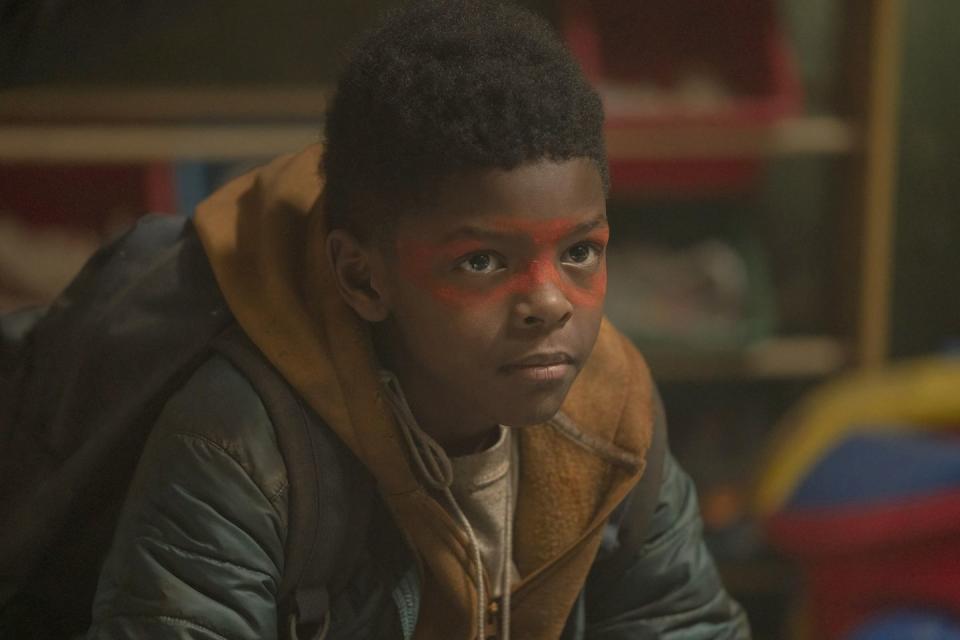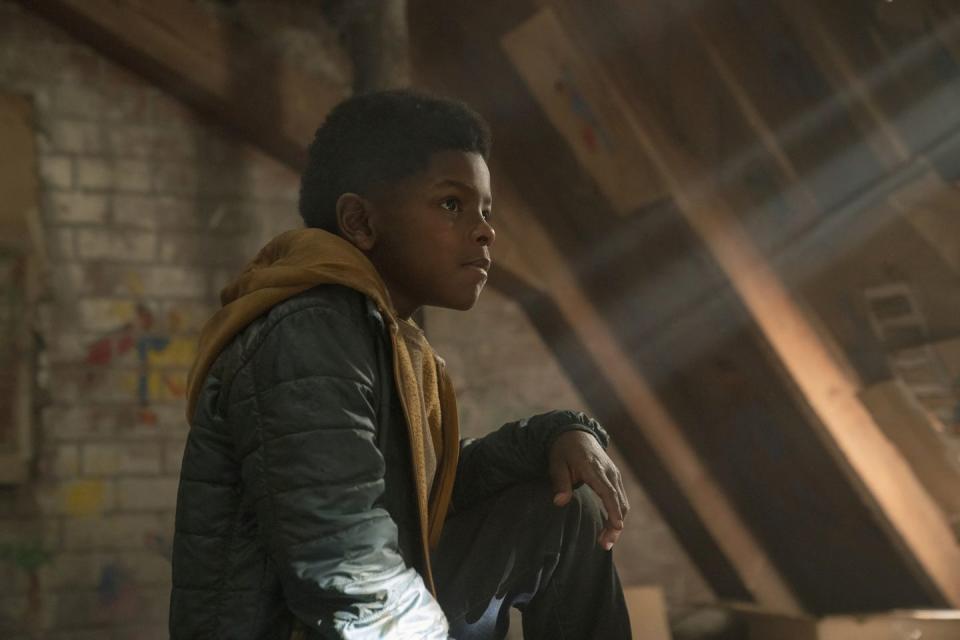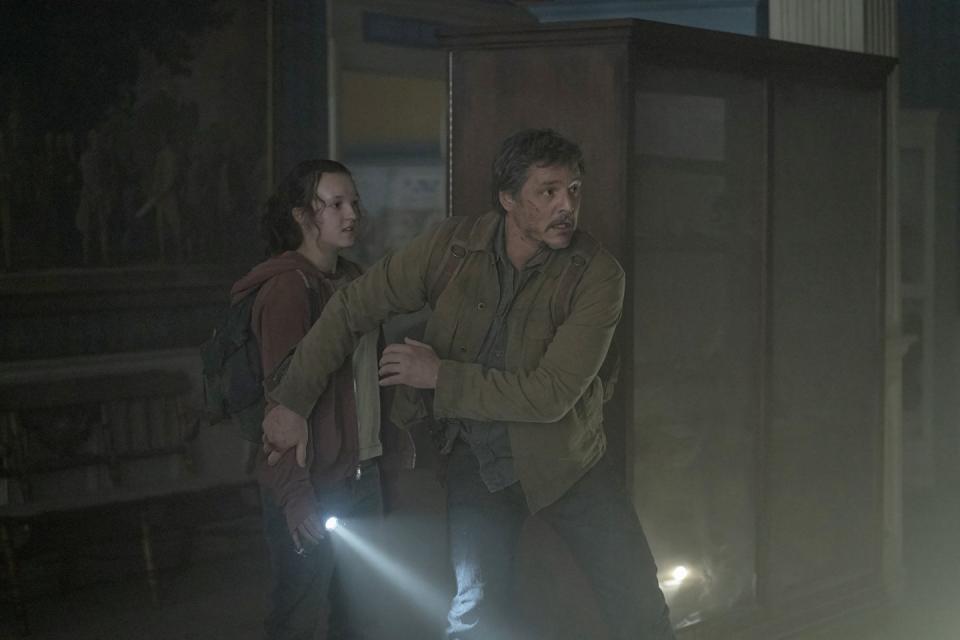Why The Last of Us episode 4's character Sam is more important than you realise
The Last of Us episode 4 spoilers follow.
Some of the most memorable sequences in The Last of Us game feature two young brothers, Henry and Sam. This week, they made their first appearance in the TV adaptation of the game, in the final scene of episode four.
We got a only brief glimpse of them as the camera pulled back from a sleeping Joel to show Henry holding a gun to Ellie's head and Sam pointing one at Joel's.
Fans of the game will already know about the pair (who we will also see in episode five). They team up with Joel and Ellie to escape Pittsburgh, where they've been hiding out. Their plan is to head for a military radio tower outside the city, and they travel as a foursome through dangerous territory toward their destination.
(We won’t spoil any more here for non-gamers watching the series, but for gaming fans, we'll just say the words 'toy robot' and pass the tissues.)
In the TV series, the location of Henry and Sam’s meeting with Joel and Ellie is different – they are all in Kansas City – and there have been other changes too. In the game, Henry is roughly 25 years old and Sam is 13. While Henry in the series appears to be around the same age as the game character (Lamar Johnson, who plays Henry, is 28), Sam is just nine years old.
And, in a departure from the game, the TV version of Sam is deaf — as is Keivonn Woodard, the actor who plays him.

This is an important change for the series, and one that game creator (and series co-creator) Neil Druckmann spoke about in an interview with The Washington Post.
"Some of the best storytelling sometimes in passive media in TV and film is scenes that don't have any dialogue, and it is just about reading a person's expression," he said.
"One of the changes that we made for the TV show is we made Sam deaf. And it started from a place of just like talking with [series co-creator and co-writer] Craig [Mazin] and we're like: 'What if we could use less dialogue?'
"That kind of constraint led to really interesting storytelling decisions that I would say in some ways make that sequence [with Sam and Henry] more impactful than it is in the game."
Changing Sam from a hearing character to a deaf one and employing a Deaf actor to play him isn't just meaningful on a storytelling level — it's also an important step forward in the representation of d/Deaf people on screen ('deaf' refers to those who are hearing impaired, while 'Deaf' refers to those who are prelingually Deaf and consider it a cultural identity).
Last month, The Daily Moth interviewed nine-year-old Keivonn Woodard about his experiences as a young Deaf actor on the set of The Last of Us. His mother, April Jackson, also spoke to the outlet about the filming experience, which she said "was incredible".
"I had the expectations, of course, that – he being Deaf – I was ready for barriers, and problems to happen, but that was not the case at all! I'm thankful we had such a great team that was receptive and motivated along with us," she said.
Keivonn, meanwhile, encouraged other members of the Deaf community to get involved in acting.
"So I would say, you don't have to be afraid. Don't be afraid to try it out. Because that's what my parents told me: to not be afraid to try out. I was a bit afraid at first, but I went ahead and overcame that, auditioned and got the role with The Last of Us! I was mind-blown."
Back in 2021, Digital Spy championed the casting of Deaf actress Alaqua Cox as Maya in Marvel series Hawkeye (and we also praised Jeremy Renner for delivering a believable depiction of a hard-of-hearing character as Clint in the series). But since then, there has been little increase in the representation of d/Deaf people on screen, so it's great to see a Deaf person featured in one of the biggest shows of the year.

One rare example in recent months of a British Deaf actor on TV is Kadeem Islam, who gave a powerful performance as Jamal in the third season of the police drama The Bay in January 2022.
In an interview with Digital Spy, Islam opened up about how important it is to have d/Deaf characters on screen.
"It's about seeing our Deaf icons on screen, being represented with our culture and our language right there," he explained.
"Our culture and language is so rich. I'm just surprised that it's being shown so rarely. We're here as always, and we will always be here."
Hopefully, the d/Deaf representation in The Last of Us is an indication that times may finally be changing, as Sam isn't the only character in the series who's part of the d/Deaf and HOH (hard of hearing) community.

Earlier in episode four, Joel's own hearing loss is touched upon. This is another departure from the game, wherein Joel is more of a superhuman character.
In an interview with The New Yorker, Druckmann recalled a debate with Mazin about Joel’s physical state in the TV series.
"We had a conversation about the toll Joel's life would have had on him physically," he said. "So, he's hard of hearing on one side because of a gun shot. His knees hurt with every step.
"I guess there's a tone where Tom Cruise can do anything. But I like my middle-aged people middle-aged."
FYI: You don’t have to be firing guns in a post-apocalyptic world to be hard of hearing. The Royal National Institute for Deaf People (RNID) estimates that more than 40% of people over 50 have hearing loss, rising to more than 70% of those over 70 years of age.
Of course, even more representation on screen would be great, but to have two d/Deaf characters in a hugely popular show like The Last of Us is definitely a giant leap in the right direction.
The Last of Us airs on HBO in the US, and on Sky Atlantic and streaming service NOW in the UK.
You Might Also Like

 Yahoo News
Yahoo News 
